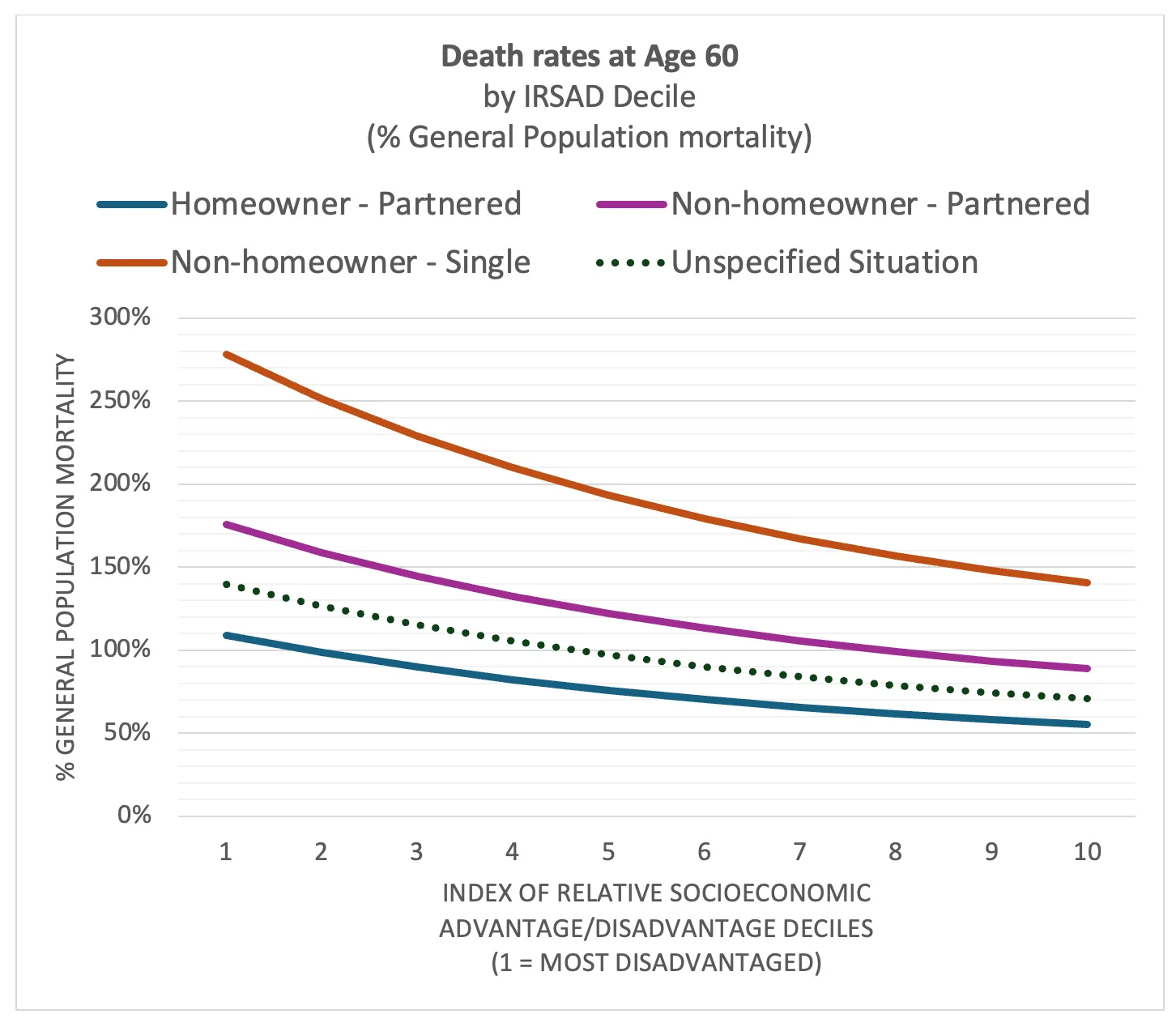Actuarial careers
Industry topics

Claim your CPD points
One of the most striking themes to emerge from the 2025 All-Actuaries Summit was the clear shift in the role actuaries are playing in retirement.
From traditional armchair experts looking at mortality curves to thought leaders shaping the future of retirement income strategy, it was evident that actuaries are no longer just supporting the design of products or deriving assumptions, but are now influencing public debate, policy thinking and strategies underpinning retirement systems.
A standout example of this new era of actuarial leadership was the widely discussed paper, “ Towards Fairer Retirement Outcomes: Socio-Economic Mortality Differentials in Australia ” by Dr Fei Huang, Francis Hui and Andrés Villegas.
The premise of their paper is that mortality assumptions cannot remain a one-size-fits-all solution if longevity products are to gain traction with the wider membership of superannuation funds.
As retirement income products evolve, there is a growing case for differentiating between cohorts. Historically, retail retirement products have primarily served the more socioeconomically advantaged — those who can access complex financial advice and engage with individual annuity offerings.
But with the rise of group retirement income solutions within the superannuation system, a broader and more diverse retiree population is now being targeted. The paper underscores the need for more nuanced assumptions that reflect these shifting demographics, supporting the development of more equitable product designs over time.
While longevity actuaries have long known of the link between mortality and factors such as marital status, wealth, homeownership and broader socioeconomic advantage, the paper elevates the conversation by providing the most comprehensive dataset and analysis on this topic to date in Australia. This isn’t new territory conceptually, but the depth and granularity of their research marks a steep change in the evidence base for understanding heterogeneity in life expectancy.
That said, I’d offer a note of caution around the use of income in the 60+ age range. This is a volatile phase of life, with many individuals transitioning between full-time work, part-time work, semi-retirement or drawing on savings before they become eligible to Age Pension. Income during this time can be highly variable and particularly when self-reported in this dataset, may not serve as a reliable proxy for advantage or disadvantage.
The following chart illustrates the type of analysis enabled by the dataset shared alongside this paper. It shows death rates at age 60 by Index of Relative Socio-economic Advantage and Disadvantage (IRSAD) decile for different cohorts of retirees based on homeownership and marital situation, expressed as a proportion of general population mortality. Quadratic fits were applied to both age and socio-economic gradients to smooth the results of the logarithmic regression.

A chart showingdeath rates at age 60 by IRSAD decile for different cohorts of retirees based on homeownership and marital situation, expressed as a proportion of general population mortality.
The paper raises important questions about how such detailed socio-economic differentials should — or shouldn’t — inform the design and pricing of retirement income products. We may be some way off from feeding granular socio-economic variables directly into pricing formulas and there are good reasons to be cautious.
For example, IRSAD deciles and homeownership are strong predictors of mortality at a cohort level, but their application at the individual level is trickier. On my own street, new $2 million homes are being rented out next to modest dwellings owned for decades by retirees who could never afford today’s prices. Both types of households may fall within the same IRSAD decile, yet their socio-economic realities are vastly different.
I’ve reflected deeply on the question of homeownership in retirement pricing. While there is a clear actuarial rationale for differentiation (homeowners do live longer on average), the ethical implications are far from straightforward.
When I raised this issue with people outside the actuarial profession, especially those working in ethics and social justice, the feedback was somehow inconsistent, along the lines of:
You see the paradox here? Seeking fairness for disadvantaged groups can lead us to feel like we are penalising those who have, against the odds, built financial security. And this ethical dilemma extends far beyond defined-contribution retirement pricing. It permeates the Age Pension means test, aged care eligibility rules and broader public policy.
In trying to support those most in need, it can feel as if we are discouraging virtuous behaviours like financial planning and personal responsibility. There is no simple answer, but recognising this ethical dilemma is crucial.
Going back to the question around what data should or should not be incorporated in the pricing of retirement products, we can frame longevity assumptions across three levels:
The paper's database is especially valuable for the Cohort Level, where grouping individuals into meaningful cohorts enables us to assess the value of retirement products more effectively. While we may not use homeownership or IRSAD directly in pricing just yet, we can still use this data for good, to assess which strategy provides the most value to which cohorts, and whether current product offerings can improve the lot of disadvantaged retirees.
It’s not just about attempting to craft best estimate assumptions for each individual retiree, a goal that remains largely elusive. Rather, these detailed mortality curves serve as a critical tool to compare outcomes, within the existing pricing framework, between different strategies and to answer the crucial questions that underpin retirement income strategy: is the retiree better off with or without the retirement product? Are they able to achieve a higher level of income while remaining within their individual risk tolerance level (a concept I discussed in a previous article )?
While the product offering itself may not incorporate granular best estimate assumptions, these assumptions remain invaluable to the actuary. They enable a meaningful comparison between two key outcomes for a given individual or cohort: the expected outcome of longevity self-insurance (e.g., planning to a specific percentile of survival, such as the 95th percentile, or to a specific age) versus the outcome of taking up a longevity product, with the potential addition of Age Pension uplift. This comparison supports both strategy development and informed member decision-making.
In summary, Towards Fairer Retirement Outcomes: Socio-Economic Mortality Differentials in Australia is a timely and significant contribution to actuarial practice, arriving just as “cohorting” has become a buzzword in retirement strategy discussions.
It challenges us to move beyond simplistic averages, to address the ethical complexities of fairness in retirement, and it equips us to see whether current retirement strategies are fit for purpose for the more disadvantaged group.
For those of us committed to improving retirement outcomes, this is the kind of data we’ve long needed to effectively quantify the value of retirement solutions at a more granular level.